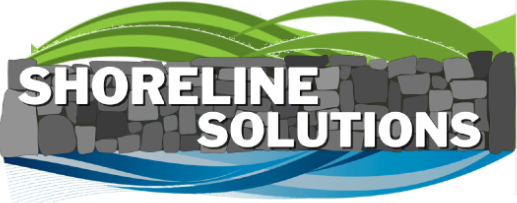Comprehensive Grand Lake Retaining Wall Maintenace Guide
Maintaining your retaining wall at Grand Lake takes a thoughtful, year-round approach.
With a well-built retaining wall, regular maintenance can extend its life for decades, safeguarding both your property value and the lake's beauty.
This guide provides a structured approach to retaining wall care, breaking down the key tasks for each season to help keep your wall in optimal condition throughout the year.
Remember, prevention is always more affordable than emergency repairs, and keeping a close eye on your wall can help catch issues before they escalate.
Seasonal Retaining Wall Maintenance Tasks
Spring (March - May)
- Clear Drainage Systems: Remove any blockages from drainage channels before the heavy spring rains arrive.
- Inspect for Winter Damage: Look for signs of freeze-thaw damage that may have occurred during winter.
- Clean Weep Holes: Clear debris to ensure proper drainage from weep holes.
- Check Wall Alignment: Make sure the wall remains aligned after potential frost heave.
- Test Soil Compaction: Evaluate soil compaction levels to prevent shifts during spring growth.
Summer (June - August)
- Monitor Irrigation Impact: Be cautious of over-irrigation, as excessive water can compromise wall stability.
- Check Wave Deflection Systems: Inspect wave deflection measures to ensure they are functional.
- Trim Vegetation: Keep vegetation away from the wall face to maintain proper airflow and reduce pressure.
- Document High-Water Marks: Record water levels to monitor wall stability.
- Inspect for Boat Wake Damage: Review the wall for any damage caused by increased boat traffic.
Fall (September - November)
- Clear Fallen Leaves: Remove leaves from drainage systems to prevent clogs.
- Prepare for Winter: Take steps to protect your wall from freeze damage.
- Check Soil Grade: Ensure the soil grade is correct to facilitate proper water runoff before winter.
- Document End-of-Season Measurements: Record measurements to track any wall movement.
- Remove Dock Accessories: Remove any heavy dock accessories to avoid adding unnecessary weight to the wall.
Winter (December - February)
- Monitor for Ice Damage: Watch for ice buildup, which can damage the wall.
- Check Drainage During Thaws: Ensure that drainage remains clear during winter thaws.
- Document Wall Movement: Keep an eye on any wall movement during freeze cycles.
- Remove Snow Accumulation: Shovel snow off the wall to minimize added pressure.
- Watch for Wildlife Damage: Monitor for wildlife burrowing that could undermine the wall.
Professional Maintenance Tips
Water Management
- Install French Drains: French drains at the wall's top can enhance drainage.
- Maintain Proper Grading: Ensure a 1-inch drop per 10 feet for effective runoff.
- Use Clean Gravel Backfill: Clean gravel allows for optimal drainage.
- Install Water Barriers: Barriers at the wall crown can protect against water infiltration.
- Consider Wave Break Systems: For high-traffic areas, wave break systems may be necessary.
Structural Support
- Add Tie-Back Anchors: Place tie-back anchors every 6-8 feet for added stability.
- Use Geotextile Fabric: Proper geotextile fabric enhances stability and erosion control.
- Choose Appropriate Materials: Use wall materials that are suitable for your location and needs.
- Step-Design for Taller Walls: Consider a step-design for tall walls to distribute pressure.
- Ensure Footer Drainage: Proper drainage at the footer is key to avoiding water damage.
Vegetation Control
- Plant Native Species: Native plants help stabilize soil without excessive root growth.
- Avoid Large Trees Near Walls: Keep large trees at least 20 feet from the wall.
- Use Ground Cover: Ground cover plants can help prevent erosion.
- Remove Invasive Species: Address invasive species promptly to avoid root damage.
- Install Root Barriers: Proper root barriers can protect the wall from aggressive growth.
Working with Local Authorities
When planning retaining wall work at Grand Lake, it’s important to consult the Grand River Dam Authority (GRDA), which oversees shoreline construction and modifications.
GRDA permits are required for significant retaining wall work, ensuring compliance with regulations that protect both your property and the lake's ecosystem.
If your property is in Grove, check for additional municipal regulations that may apply.
Additionally, many lakefront communities, from Grove to Monkey Island to South Grand Lake, have active HOAs with their own shoreline requirements.
Before starting a retaining wall project, review your HOA covenants and consult your neighbors, as retaining walls can affect adjacent properties.
Some HOAs have shared maintenance programs, which can help distribute costs for regular inspections and repairs.
Tip: Document all modifications with photos and keep detailed records of permits, inspections, and repairs. These records can be invaluable for insurance claims or when selling your property.
The Bottom Line
Regular maintenance is the key to preserving your retaining wall and protecting your property investment at Grand Lake. By addressing small issues early, you can prevent costly failures down the road.
If you’re unsure about the condition of your retaining wall or need professional help, Shoreline Solutions is here to assist. Prevention is always more affordable than repair.
Call Shoreline Solutions now at (918) 944-0855 to schedule your retaining wall consultation.
